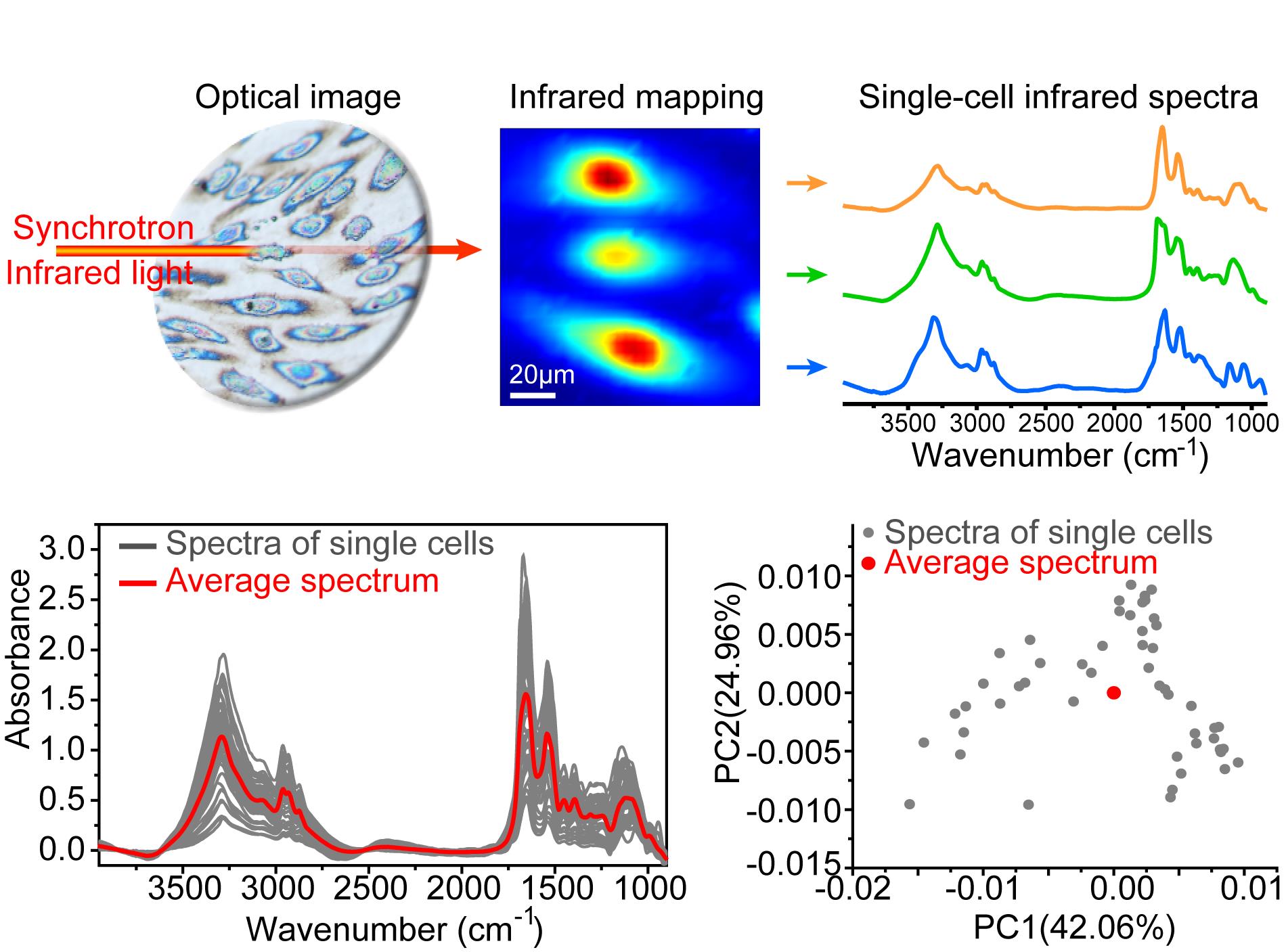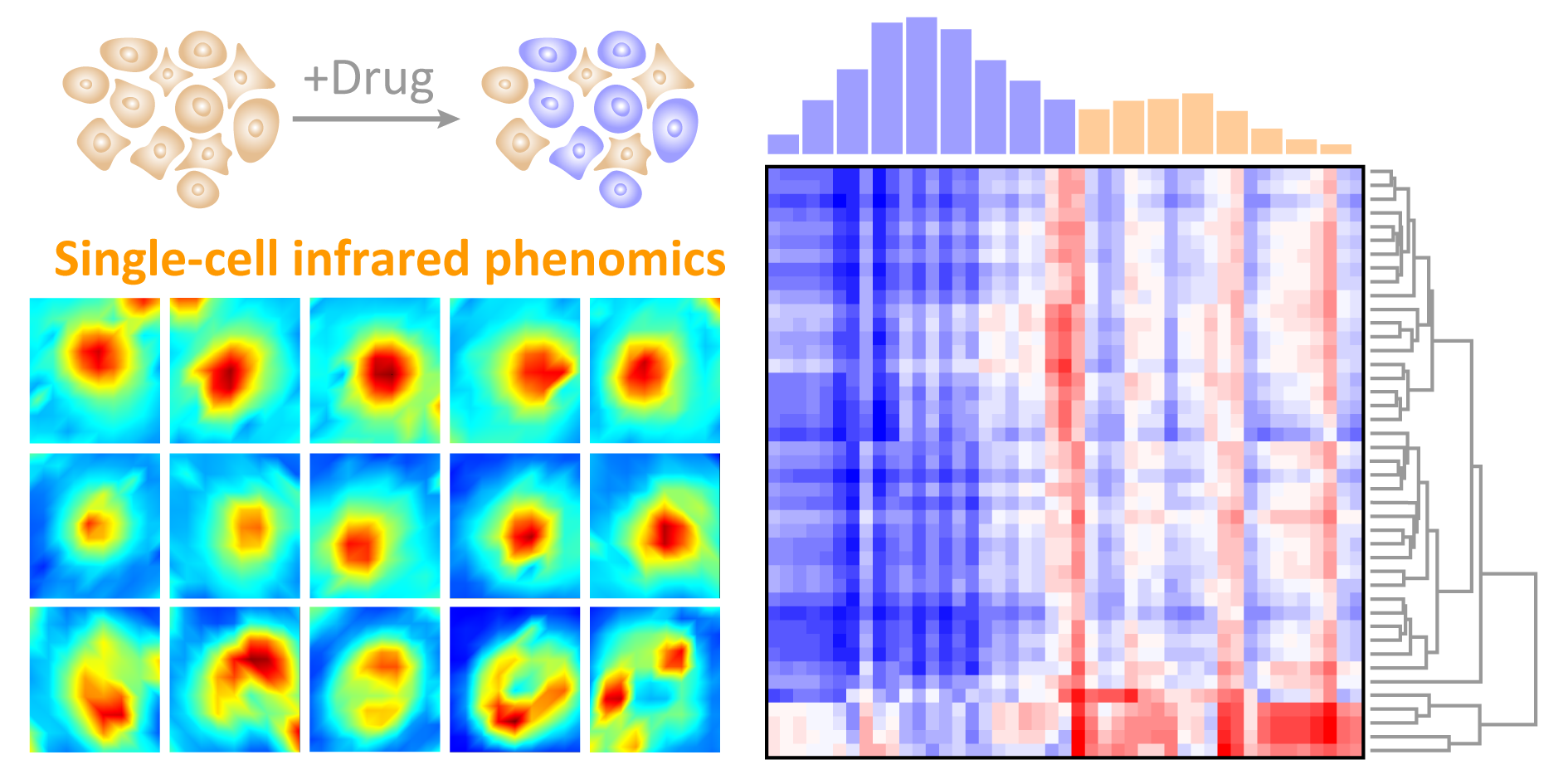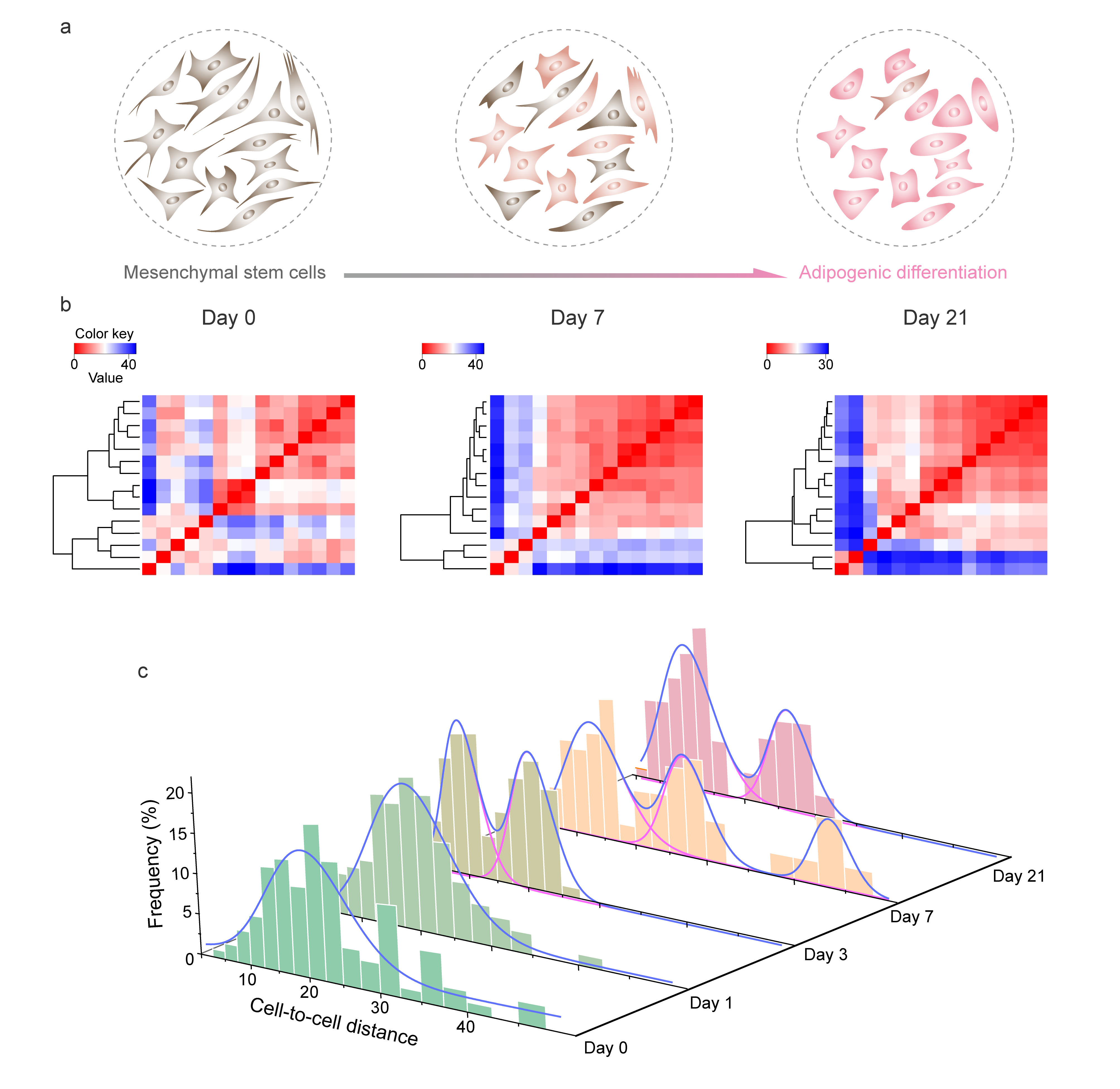Research Progress
Single-cell technologies are becoming hot topics and key directions of biomedical research due to their abilities to answer the basic question of cellular functional heterogeneity and to interpret the molecular basis of various chronic diseases as well as aging. Among the single cell techniques, single-cell infrared spectroscopy obtains growing attention because of its advantages in simultaneously identifying the characteristics of intracellular metabolites.
Recently, Professor Lü Junhong’s group at Shanghai Advanced Research Institute (SARI), collaborating with Shanghai Center for Bioinformation Technology, National Engineering Research Center for Nanotechnology, Capital Medical University Tiantan Hospital, Binzhou Medical University and Shanghai Jiao Tong University Ruijin Hospital, have successfully revealed new tools to evaluate single-cell infrared data based on synchrotron radiation.
Fourier Transform infrared (FTIR) spectroscopy is a well-established non-destructive and sensitive analytical technique for the study of biological samples. Due to the inevitable technical errors/variation (caused by water vapor, CO2, instrument noise, etc.) or batch effects, a significant number of cells must be analyzed in order to distinguish the measured signal from controls with statistical confidence. Therefore, estimating a reasonable and practical amount for single-cell infrared spectroscopy is particularly necessary.
To this end, the group has developed a statistical method and procedure to evaluate single-cell spectral variability among two different cell types and two states. After calculating the similarity distance of the corresponding infrared spectra, they confirmed that 20 cells measured per time is sufficient to control batch effects (CV < 5%).
These findings provide a useful tool to evaluate the single-cell spectral quality and an important benchmark for the investigation of cellular heterogeneity.

Figure 1 Batch effects on single-cell infrared spectra and the establishment of evaluation methodology (Image adapted from Chemical Communications)
Cell phenomics is an emerging field that simultaneously characterizes many phenotypic traits of cells in response to genetic mutation and environmental influences. The group has proposed a label-free phenotypic screening strategy based on the combination of single-cell infrared microspectroscopy and the statistical calculations of the similarity among single cell infrared spectra.
This novel approach enables subtle phenotypic changes to be unveiled within individual cells by using comprehensive analysis of spectral similarity in chemical components. Based on this infrared phonemics method, they demonstrate for the first time phytomedicine protopanaxadiol with different concentration induces phenotypical changes of cancer cell HepG2.
These findings provide a powerful tool to accurately evaluate the cell stress responses and to largely expand the phenotypic screening toolkit for drug discovery.

Figure 2 Single-cell infrared phenomics and drug screening (Image adapted from Chemical Communications)
With the rapid technological advances, a variety of single-cell methods are emerging for the promise of unveiling cellular heterogeneity. The demand of a detailed and unbiased approach to simultaneously quantify global biomolecular structure information in a single cell and heterogeneity within cells is urgent.
The research group developed a novel strategy to quantitatively evaluate cellular heterogeneity based on single-cell synchrotron FTIR microspectroscopy and computational methods. After calculating the cell-to-cell similarity distance of the infrared spectral data, they confirmed that the statistical analysis of single-cell infrared phenotypes can be used to quantify the heterogeneity in a specific cell population. Based on this method, they revealed the infrared phenotypes have a similar tendency with increasing heterogenicity at the early stage and decreasing heterogenicity at the terminal stage of differentiation toward adipocyte lineage.
These findings provide an alternative methodology for dissecting the cellular heterogeneity, and the combination with other single-cell analysis tools will be very helpful for understanding the genotype-to-phenotype relationship in cellular populations.

Figure 3 Sing-cell infrared microspectroscopy quantifies dynamic heterogeneity of Mesenchymal stem cells during adipogenic differentiation (Image adapted from Analytical Chemistry)
These findings were published on Chemical Communications (2020,26:3773-3776;2020,86:13237-13240) and Analytical Chemistry (2020,10.1021/acs.analchem.0c04110) respectively.
These works were supported by the National Natural Science Foundation of China and from the BL01B beamline of the National Facility for Protein Science in Shanghai (NFPS) at Shanghai Synchrotron Radiation Facility.
Contact: Lü Junhong
Shanghai Advanced Research Institute, Chinese Academy of Sciences
Email: lujunhong@zjlab.org.cn





